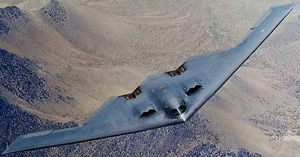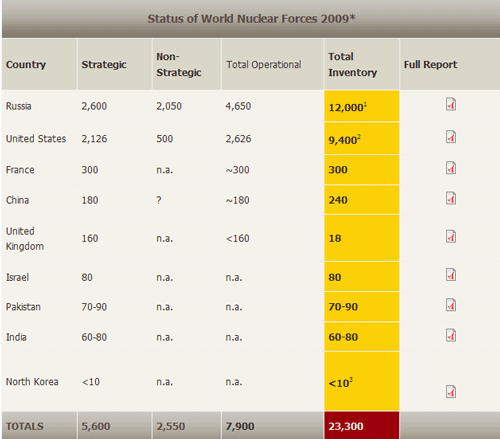
The Administration will make perhaps its most important announcements over the next few months, affecting our very existence.
I am referring specifically to the results of our nuclear posture review and the arms control deal we are seeking to make with Russia. Congress, and the Senate in particular, will have to judge both. The stakes are very high and the complexities are immense. Plenty has been written on both, but the essential reasons why we have nuclear forces has been ignored.
Below are a few myths.
- Myth #1: If we reduce our nuclear stockpile, it will encourage others to do the same. There is no historical evidence to support this claim. The USSR/Russia has been the only state to follow our lead in the past, and then only after years of negotiations. Our nuclear stockpile has declined by 80% since 1991; yet in the same timeframe India, Pakistan, and North Korea have built nuclear weapons, China has increased its stockpile, and Iran, Iraq, Libya and Syria have started nuclear programs. To the contrary, US disarmament has so far not made us safer. It will not lead our adversaries to disarm.

Credit: http://www.ploughshares.org/news-analysis/world-nuclear-stockpile-report - Myth #2: The best way to reduce our stockpile is to arbitrarily declare a new lower number. Actually, this is the worst way to determine the composition, alert status, number, type of delivery vehicles, and posture of our forces. Instead, we should describe our strategies, our forces’ intentions, our deterrence plan, and our intended response to attacks; then we should derive our forces with the characteristics to meet our strategy.
- Myth #3: We don’t need many weapons, just enough to destroy many of our adversaries’ cities. Actually, it is both immoral and against many of the treaties signed by the US to intentionally target non-combatants. As a result, the nuclear guidance given to our military forces emphasizes military targets. Yes, there will be collateral damage, but in many cases the civilians who perish will be far from our adversary’s cities … and in much lower numbers than many pundits suggest.
- Myth #4: Lower numbers are always better. Actually stability will be undermined if the number of nuclear weapons is too low. It will create a very low margin for error in assuring compliance. A low number encourages our adversaries to cheat, consider a first debilitating strike to remove our nuclear capabilities, or assist other US adversaries in their efforts to obtain nuclear weapons.
- Myth #5: We don’t need nuclear weapons because our main enemies are terrorists. This myth is based on the belief that terrorism is our only adversary and will be so far into the future. Historically, we have always been wrong in our postulation of when, where, and who we will fight next. There is no reason to suggest that sometime in the future an adversary, which has nuclear weapons, will not threaten us. It is far better to deter an adversary by being strong, than to fight him.
- Myth #6: Deterrence will work, even if we put no forces on alert and allow our nuclear capabilities to degrade. This myth is sometimes phrased as “taking deterrence for granted.” We actually do not know that deterrence has worked or not worked – we only know that our forces, readiness, planning, etc have been credible in the eyes of potential enemies. We also know that we have not been attacked. The common measure of deterrence is generally considered: Deterrence = Capability + Will. Capability is measured not only in numbers, but also in forces that are ready, responsive, survivable, and flexible. Will is understood as our intent to respond in the event of a nuclear attack. Deterrence is always measured through the eyes of a potential enemy – not our own eyes.
- Myth #7: We don’t need many nuclear weapons, because we have strong conventional forces. Actually our power projection forces are the oldest in our history. B-52s are from the 1950s. Our newest bomber, the B-2, is now 20 years old. Our tanker forces are the oldest in our history. Even the strongest pillar of our nuclear deterrent — our Minuteman ICBMs first entered the force in the 1970s. Yes, our conventional forces are good – but our own security is not the only reason why we possess nuclear weapons. We provide extended deterrence for our Allies, NATO, Japan, South Korea, and others – so they won’t feel obliged to develop their own nuclear programs. Our extended nuclear umbrella reduces the world’s total number of nuclear weapons, puts the majority of weapons safely in US hands, and reduces the odds of proliferation to rogue states or other non-state groups. It is probably the most important reason to keep a sufficient stockpile of weapons.
- Myth #8: Nuclear weapons are a huge drain on our budget. Actually, the entire nuclear force – from the infrastructure, labs, delivery vehicles, weapons, and the people to operate them is a very small percentage of the DOD and Energy Department budgets – less than 5-6%. If we reduce the number of warheads, we save very little because we have already made the necessary investments. Do we really want to get rid of capabilities for which we have already paid? What we get in return cannot be overstated – it is literally our national survival. It is also very expensive to decrease our stockpiles because we would need to dismantle and dispose of them in a responsible way.
If we get this wrong, our very existence will be threatened. This is not an area where the President should announce a goal, which is rubber-stamped by Congress. We need to be cautious, take our time, and hear the judgments of the Joint Chiefs of Staff and our field commanders.
The central question, which ought to be asked, is not: “Can we live with this treaty and force structure?” The central question should be: “Does this treaty and force structure make us safer?”
There is little room for mistakes…
———-
***Posted January 18th, 2010

